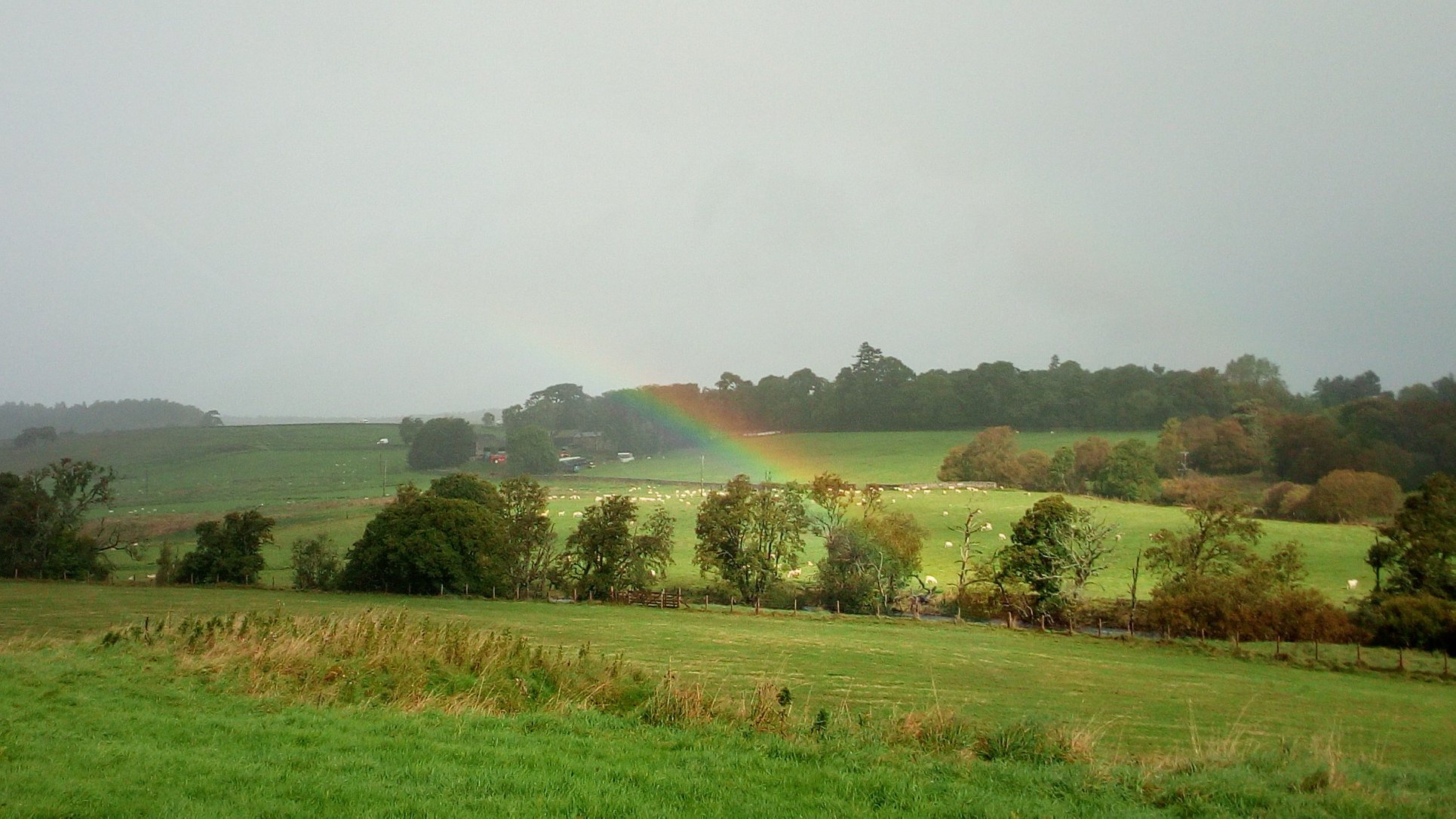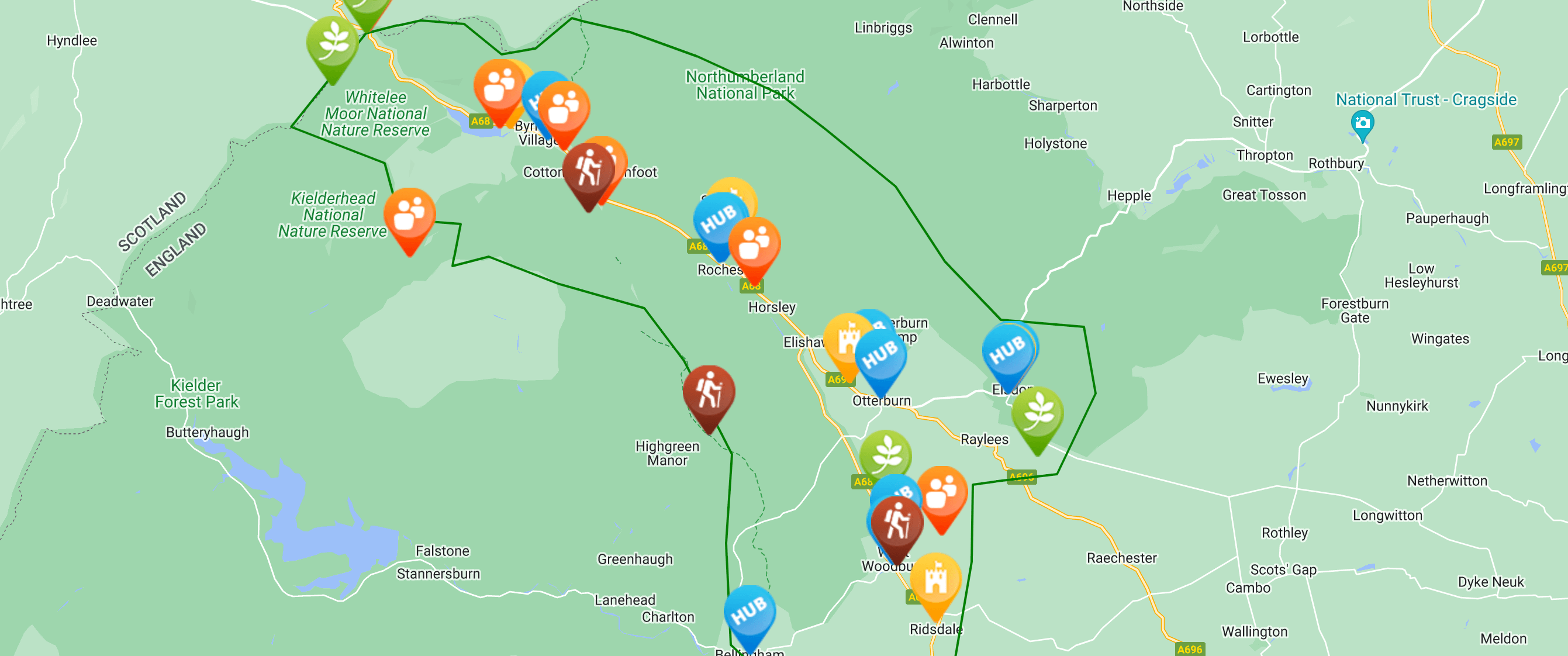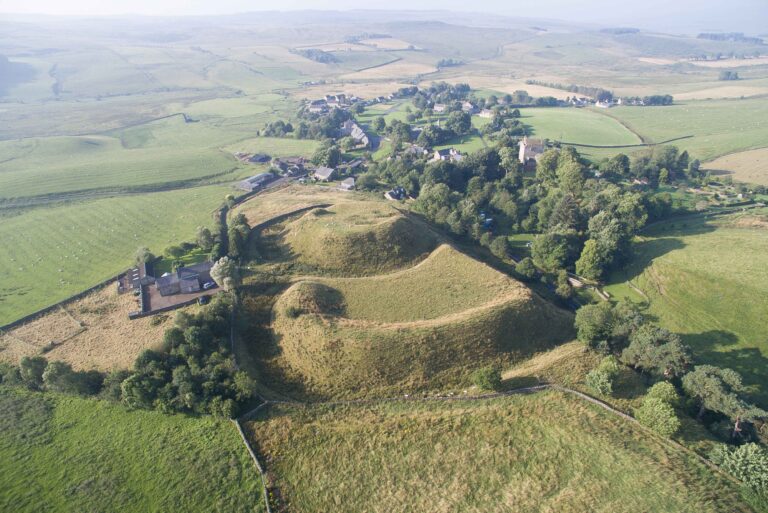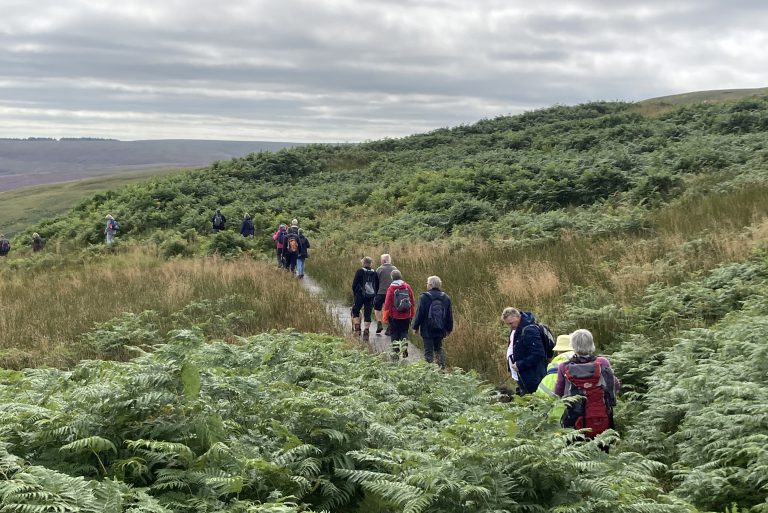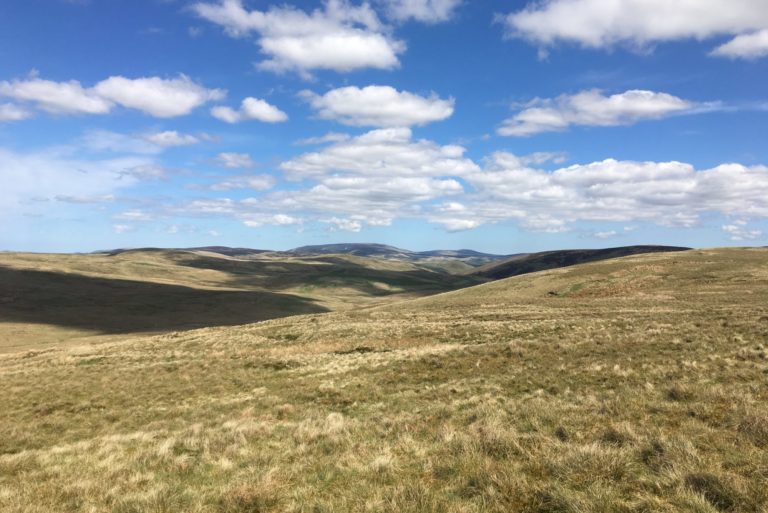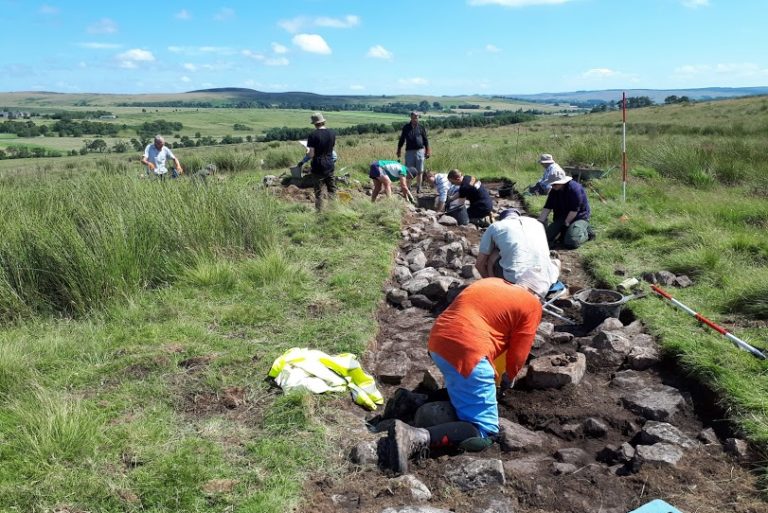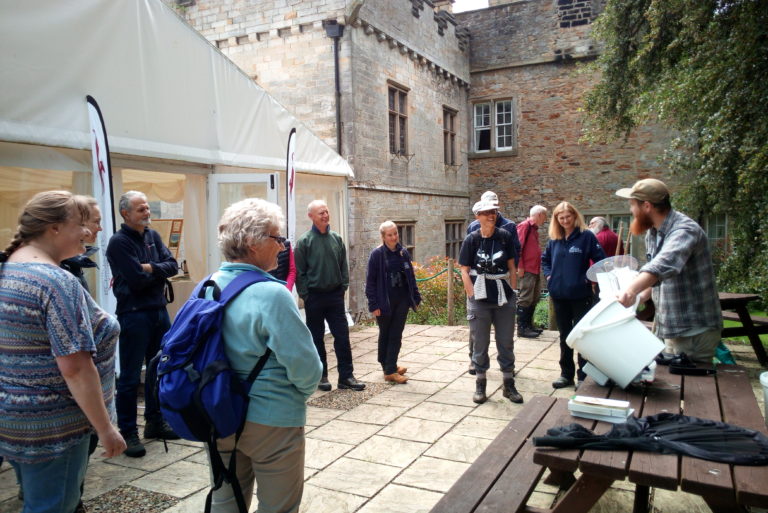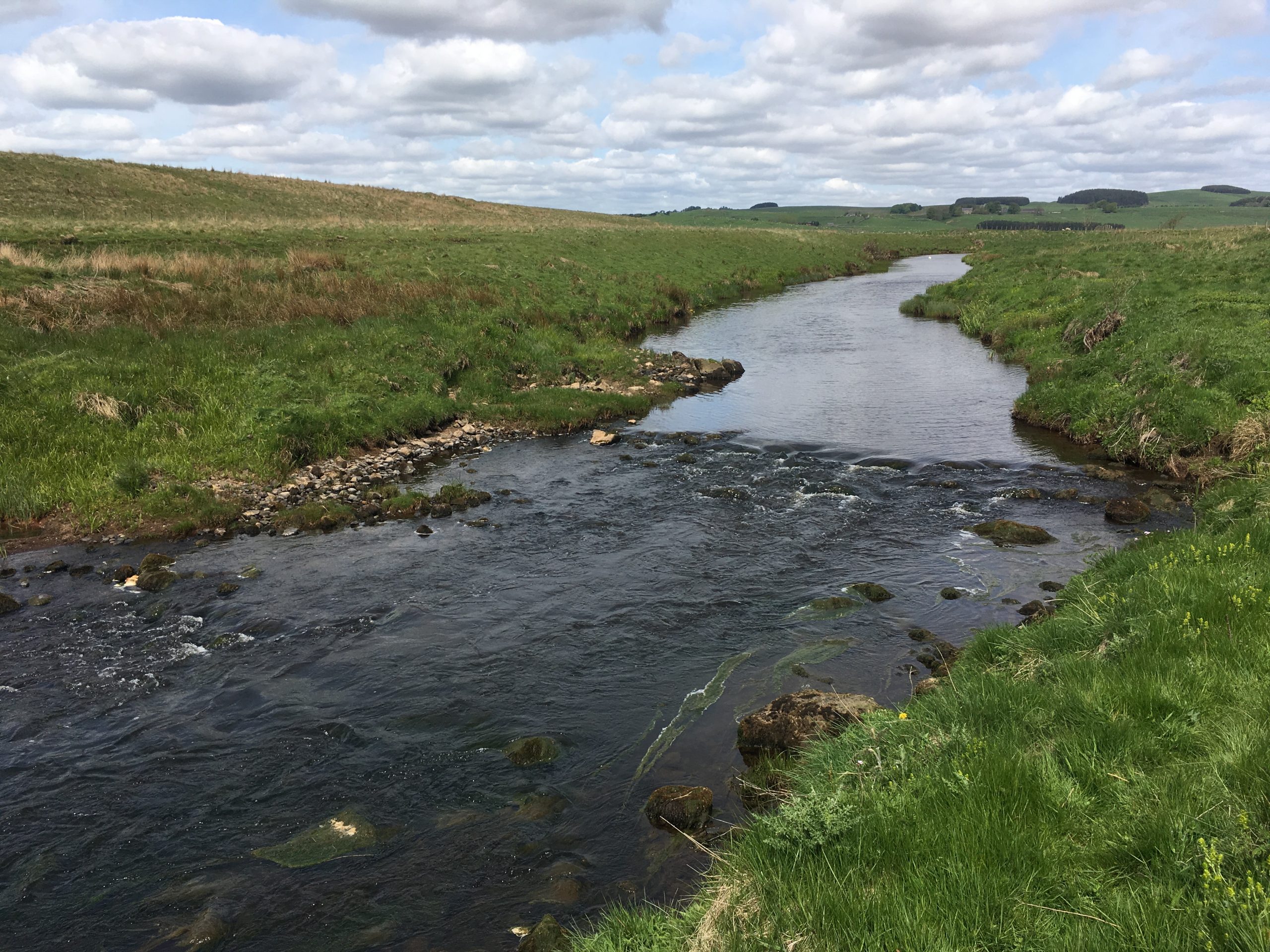
On 25th January 2022 the Revitalising Redesdale team gave an online presentation about the overall Revitalising Redesdale programme so far, including Natural Redesdale and Lost Redesdale archaeology activities, together with Community Engagement and Activity proposals for the coming year. The talk is now available for you to view below and on our YouTube channel.
Interested in finding out more about what we’re up to? Visit our What’s On page to see upcoming events.
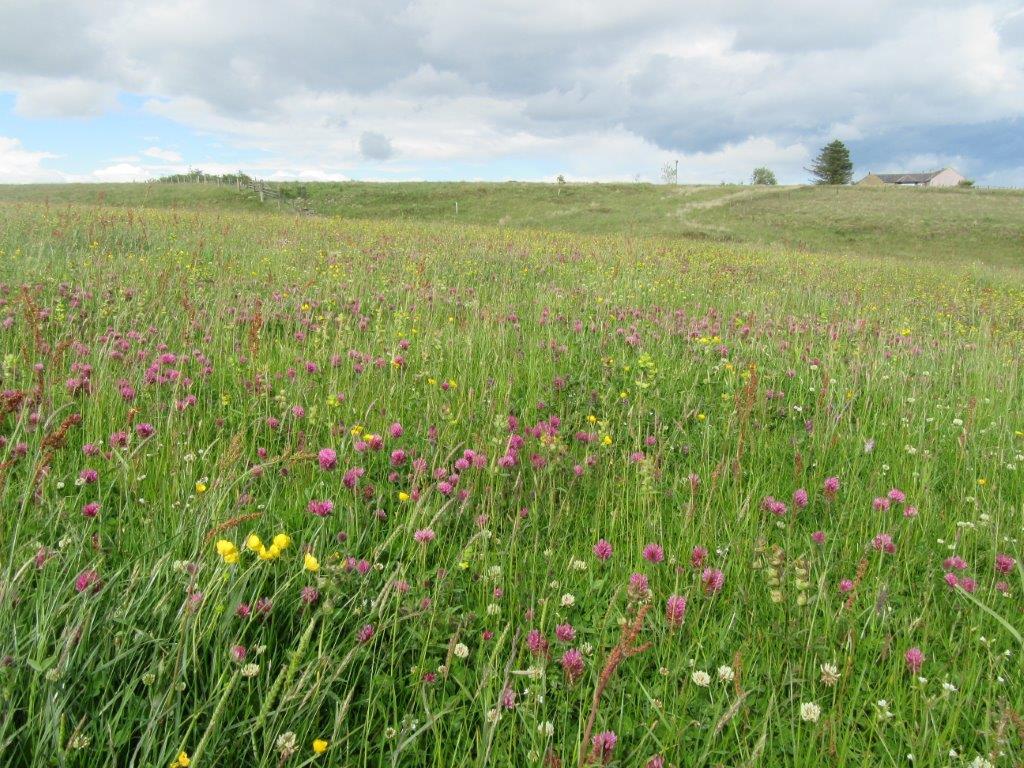
It may not feel like mid-June but summer is fast approaching and it is a great time to be out in the natural world! The birds are singing, wildflowers blooming, and lambs are putting on some timber.
This week we are handing over to Billy Bell, the famous Redesdale poet, to celebrate natural Redesdale and, perhaps, inspire you to write a poem about nature near you. As part of The Wildlife Trust’s 30 Days Wild challenge or simply because it is a wonderful way to engage with nature, why not write a poem about somewhere in Redesdale and send it to us. We would love to hear what you have to say!
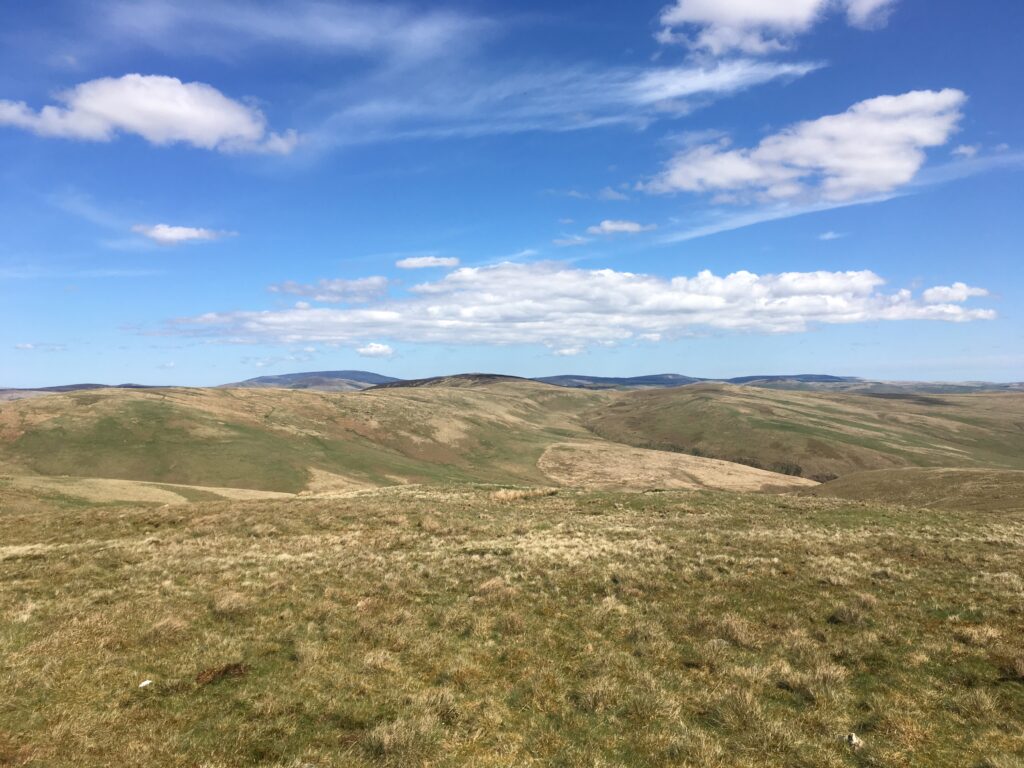
From ‘Amid the Hills of Redesdale’ by William ‘Billy’ Bell
Now Phoebus with his kindly beams
Smiles sweet on woodland, fields and streams
Where happy songsters chant their themes
Amid the hills of Redesdale
Now with radiant stately mein
Summer spreads her mantle green
Where the new shorn flocks are seen
Amid the hills of Redesdale
Where the many coloured flowers
Sparkling with the dewy showers
Lighten up the fragrant bowers
Amid the hills of Redesdale
Leafy woods and ferny fells
Time worn deep and rocky dells
Clear cold bubbling crystal wells
Amid the hills of Redesdale
Where the heath bedecks the wold
Where the sunsets sink in gold
O’er the mountains grim and old
Amid the hills of Redesale
Where the pricker once did ride
Trusty broad sword by his side
Moon and stars his only guide
Amid the hills of Redesdale
Where the hut and sheltering peel
Oft the touch of fire did feel
When the Scotsmen came to steal
Amid the hills of Redesdale
Where the din of battle brayed
Where drank deep the flashing blade
Deeds of valour were displayed
Amid the hills of Redesdale
But these times have changed today
Blessed peace now holds her sway
May she reign for ay and ay
Amid the hills of Redesdale
If you haven’t already discovered it, Northumberland National Park’s collaboration with Simon Armitage – Poems in the Air – is a fantastic example of how poetry exists within the landscape. Where does poetry exist in Redesdale for you? Send us your poems about a place of natural beauty or evocative of the valley’s colourful history.
If you are looking for inspiration, you might find poetry in the ripples of wind through a wildflower meadow?

Even if poetry is not your thing, look out for wildflowers in your local area, especially the not so familiar ones, such as wood cranesbill, sneezewort, globe flower and pignut. How many types can you spot? Don’t worry if you’re not an expert, snap a photo and add it to the inaturalist app and members of the recording community can help to identify it! You can also use Plantlife’s Spotter Sheets to get an idea of what to look out for each month.
Our Reflowering Redesdale project is all about increasing the wildflower diversity and connecting networks for pollinators, in hay meadows, village green-spaces, along road verges or in certain lay-by parking spots. If you would like to get involved in this project once we are able to work outside again, please get in touch with the Team.
Please remember to follow the UK Government’s guidance on enjoying time outdoors responsibly and be considerate of local communities: www.gov.uk/coronavirus
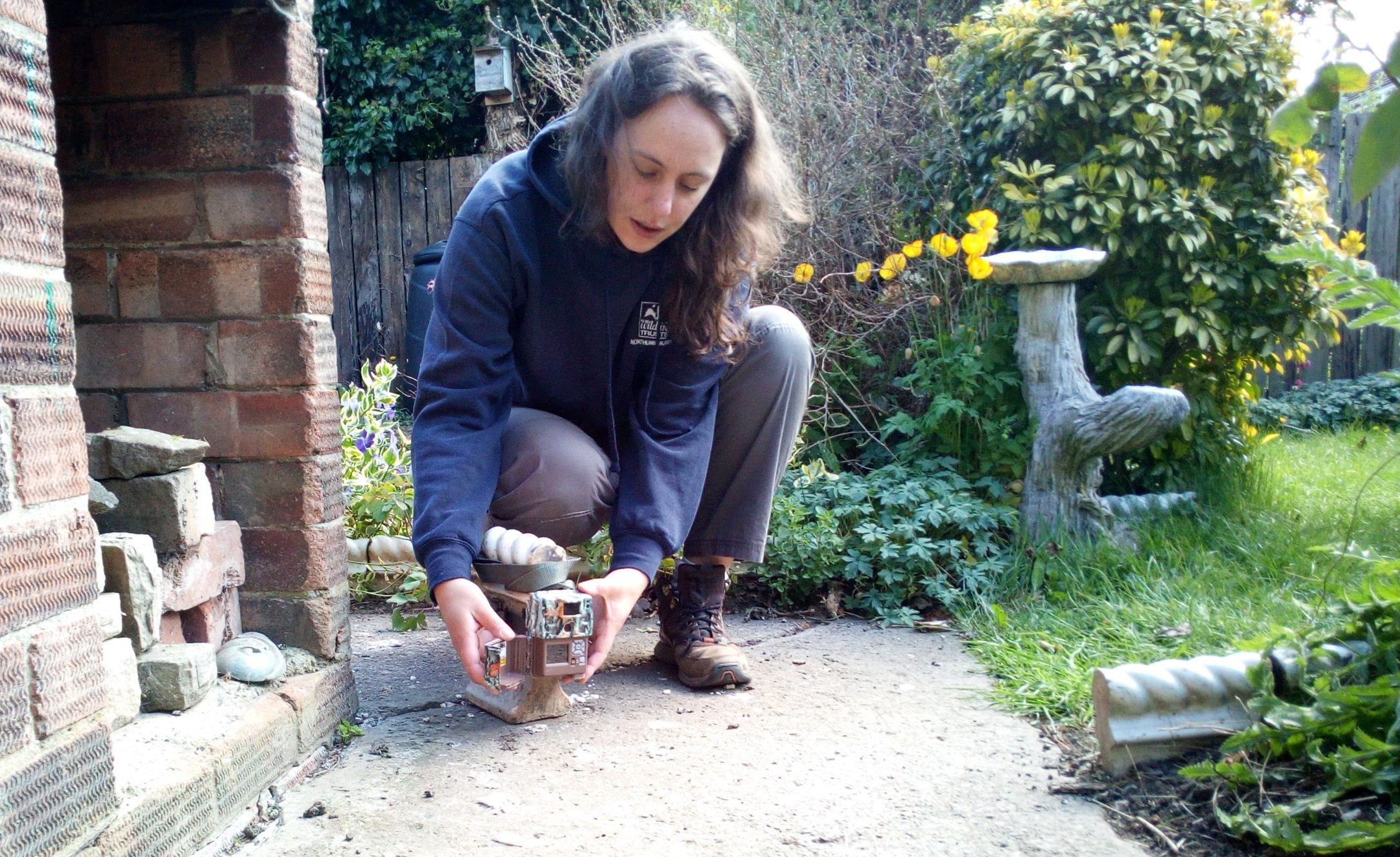
by Jennifer Care, Revitalising Redesdale Farming and Wildlife Officer.
This global pandemic has changed the way we do things. Our world seems smaller. For many of us life has slowed down. However, it’s a good opportunity to re-engage with our local area and learn about the wildlife on our doorstep.
I have always had a fascination with nature. I feel better with it around me and I love having a job where I can protect and champion our amazing natural world. However, it was not until last year that I took part in The Wildlife Trust’s 30 Days Wild challenge for the first time. This annual challenge to spend time closer to nature every day in June made me aware of how much I already do, reminding me to live in the moment and to appreciate the everyday miracles of nature. It’s started again this week and there’s still time to get involved http://wildlifetrusts.org/30DaysWild.
I get lots of wonderful wildlife with my job, but I still try to sneak in some extras. So, here are just a few of the marvellous moments of nature I’ve snuck into busy days of events, practical conservation, meetings and more in Redesdale over the past couple of years and ideas for how you can easily add something similar to what you do:

1. Take a nature photograph.
Last year I took part in a training day to learn how to do Modular River Physical Surveys (if you’re feeling nosy you can find out more about this citizen science project here). It’s a fairly technical and time-consuming technique to survey the geomorphology of the river, which we hope will be useful in providing a baseline and monitoring the success of our river restoration work. We spent time practising the survey methods at the river. It was a glorious sunny day and clouds of banded demoiselles were flying around. I took a few minutes out to try to catch them on my phone camera…They were tricky to photograph, spotting me and moving away, but this male was perhaps distracted enough for me to get close, having caught a mayfly!
You don’t need to be a professional to use a photograph to get a closer look at something interesting or beautiful and perhaps you, unlike me, can even photograph your subject without a blade of grass in the way!
2. Learn something new.
One of the amazing things about the natural world is that it’s so large, diverse and continually changing that there’s always something new to learn! I frequently puzzle why, how, or what about things I see, but much less frequently remember to research the answers later. However, after my second sighting of this strange fungus on a sheep skull I took a photo and tried to find out what it is.

Sometimes these things get very complicated, with lots of similar species, but luckily this one was pretty distinctive. It’s called Onygena equina, commonly known as the horn stalkball. Apparently it is not often recorded due to its unusual habitat requirements: Its spores germinate better having first been through the gut of a herbivore; they then need to be excreted near a suitable carcass, as this fungus digests keratin and grows on putrefying horns and hooves of cattle and sheep. It’s amazing the way everywhere is home to something!
The trick is to be curious. Wonder. Then go and find out.
3. Eat outside
This one is a bit of a cheat really – when on a practical conservation task, removing non-native Sitka spruce regeneration from a peat bog, where else were we going to eat but outside?! However, that’s the thing about meals, it’s a pause, so where better to spend that time than outside on a beautiful day. With the mosses and heathers as a cushion, a soundtrack of skylarks and expansive views (and of course a hard-earned lunch), I remember it as a perfect setting to immerse in nature.

You can do it at home. Take a sandwich outside. Perhaps go barefoot if you have a lawn. Listen, look, feel.
4. Become a citizen scientist
Those who know me will know I’m a huge wildlife enthusiast, constrained by too little time and too many interests. I dip into a few different surveys and submit sightings to the local records centre. However, for the last few years, much of my spare-time wildlife activity has been focused on birds, participating in the BTO bird ringing scheme and, more recently, their nest record scheme.

Last year I found this nest of swallows at one of the Redesdale community sites I was working at and monitored it. There were two chicks and both successfully fledged.
My photo is a bit dark, but if you’d like to see swallow chicks in Redesdale then, Wild Intrigue have a camera on a nest in West Woodburn. Look soon before the chicks fledge!
You can become a citizen scientist too just by seeing some wildlife and letting your local records centre know (in Redesdale that’s ERIC North East, but if you’re outside the North East then look up your local centre here). You just need to know what you saw, when and where! Remember that all wildlife sightings are important, even those of species considered common.
Alternatively, you can get involved in a particular study. There are many citizen science projects going on covering all sorts of different wildlife; find one to suit you here.

5. Change your perspective
All this is very well, you say, but how do I actually find any interesting nature? My tip is to look at more than just what is immediately in front of you – change your perspective! Look up – watch clouds, see how tree branches can frame the sky, watch a buzzard or a skylark soar.

Look down and spot vole tunnels and latrines in tussocks of grass or beauties like this adder – he was basking on a road verge as I was doing a botany survey.

Look big, at hills, rivers, sunrise and sunset, and look small, at miniature landscapes of lichens and mosses, like this lawn of devil’s matchstick lichen with trees of heather at Benshaw Moor.
Test your imagination and think what it might be like to be one of our wild neighbours. What would the world look like (it’s not just about physical perspective – did you know bees see a different range of colours to us?!)? Where would you shelter or drink? How would you communicate? How would your offspring disperse?
Perhaps the more we can see things from a wildlife perspective the more we can see ways to help. If you’re feeling inspired, then a good place to start is The Wildlife Trusts’ host of ideas of simple things to help wildlife.
Finally, please share your wildlife experiences with others and help them connect with nature too (live wildlife webcam anyone?). Our natural world is facing a plethora of challenges and it needs all of us to help! For people to take action for nature, they first need to care. For people to care, they first need to know about the natural world and its wonders!
Perhaps learning to steal a moment with nature within our busy lives, marvelling at something different each day, is a good step to keep when normality (whatever it will be) resumes.
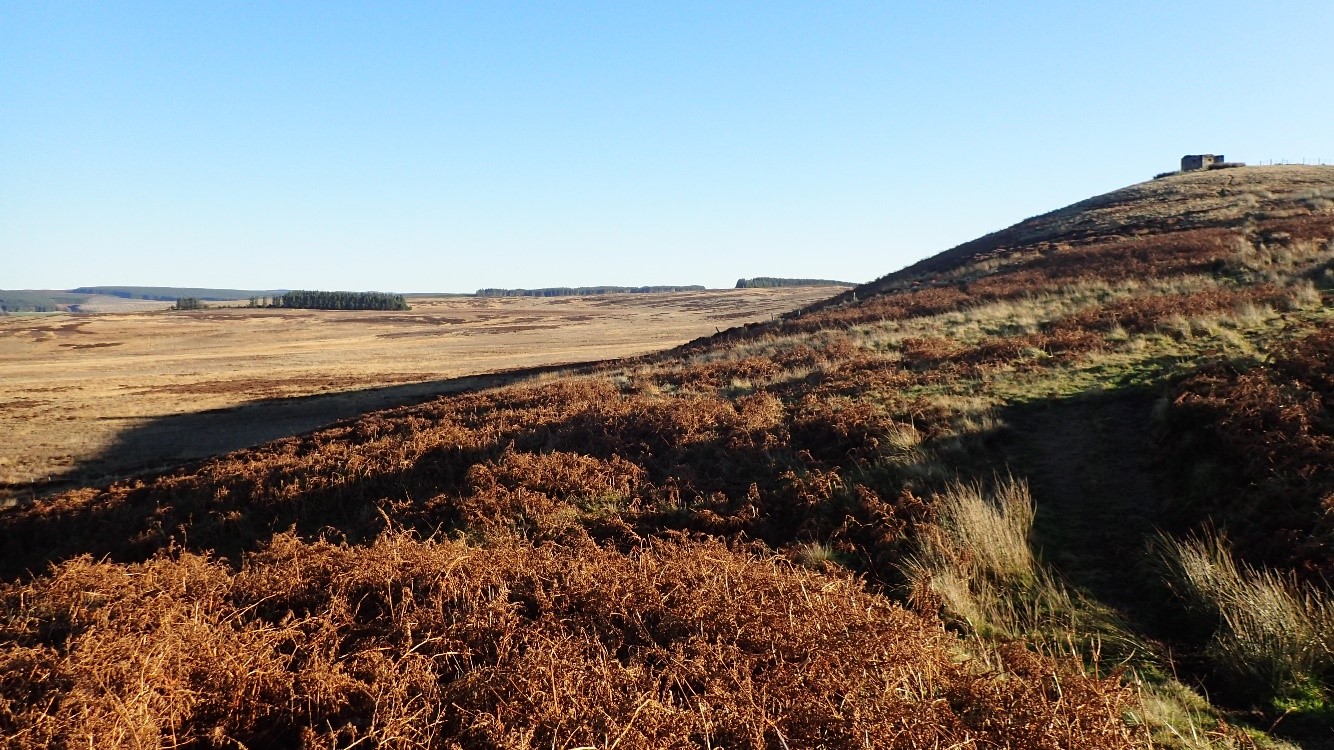
To help commemorate VE Day 75, this week’s My Revitalising Redesdale highlights a piece of Redesdale’s hidden wartime history on Northumberland Wildlife Trust’s newest nature reserve. Thanks to Duncan Hutt at Northumberland Wildlife Trust for sharing this with us.
Benshaw Moor is Northumberland Wildlife Trust’s newest reserve. One of the aims of 2020 was to find out much more about the wildlife living on the site but it’s important not to forget the history and archaeology there too. Perhaps the most obvious remains are the World War II relics.

The Chain Home radar station at Ottercops lies, for the most part, on land next to Benshaw Moor but its outlying extras do extend onto the site. Chain Home was a series of early warning radar stations built before and during the Second World War for the purpose of detecting and tracking aircraft. The claim to fame of the Ottercops station was that it was the first to detect the light aircraft piloted by Rudolph Hess on his flight to Scotland in 1941. Hitler’s deputy’s mission is still shrouded in mystery but the tracking of his journey over British soil started here.
The radar station was defended by 4 light anti-aricraft sites in the local area as well as a set of pillboxes at strategic locations. One of those pillboxes sits at the highest point of the Trust’s site at the top of Benshaw Law. This is a standard type 22 pillbox with an added porch; a hexagonal concrete structure with views out over the site. Middle Hill, in the centre of the site seems to be the location of one of the anti-aircraft artillery sites although there is little left to show for this.
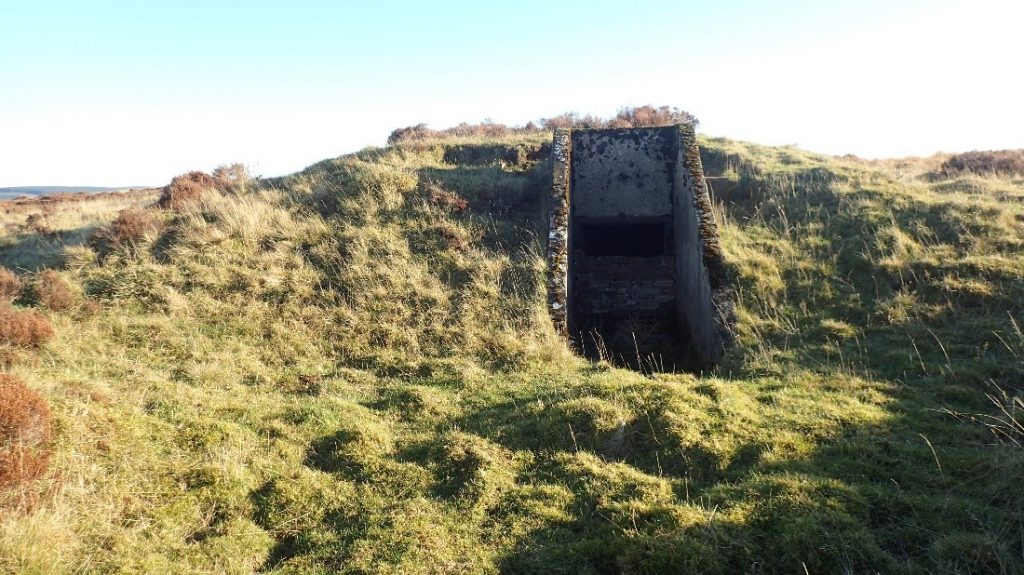
The other WWII relic is that of a small bunker, its entrance now largely bricked up. This was, most likely, an explosives store or magazine, situated away from the main installation and somewhat featureless inside, only the entrance way is visible.
There is much more to learn about the wartime history of Benshaw Moor, any additional information would be gratefully received. In particular we would like to get more evidence of the Middle Hill anti-aircraft position as all that now remains is a small cairn.
Information has come from:
The Pillbox Study Group
Keys to the Past
Latest News & Events
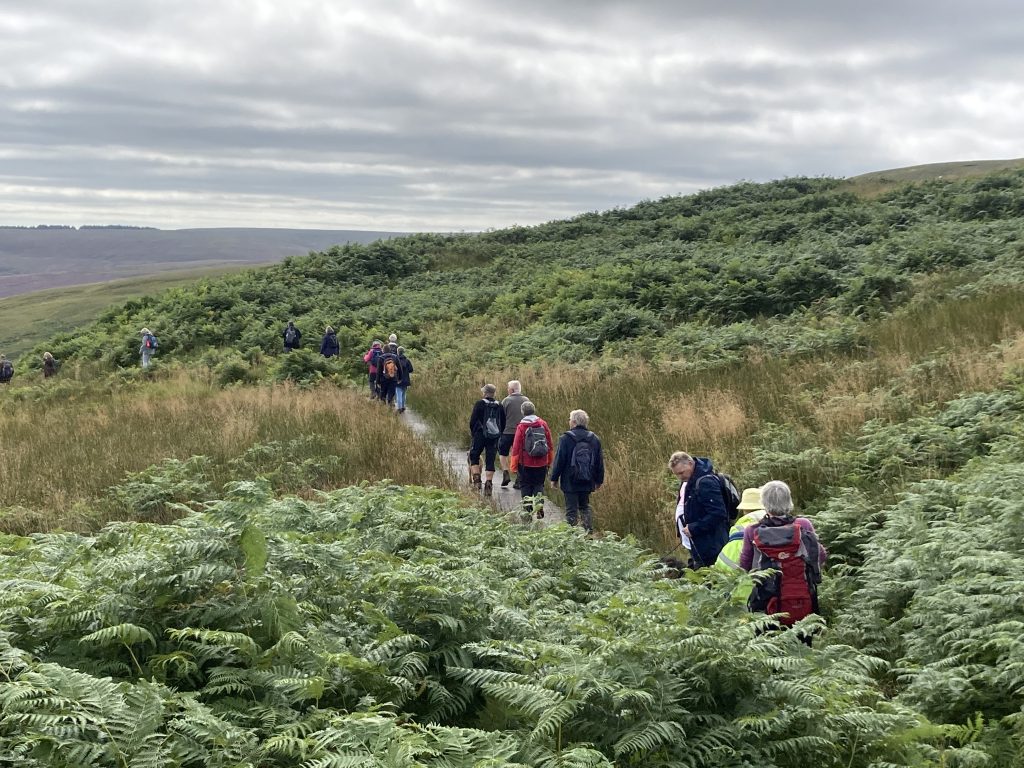
Great Days Out in Redesdale
July 18, 2023
Explore Redesdale with four itineraries for a great day out – Revitalising Redesdale designed to help visitors to Redesdale plan their visit
Read more